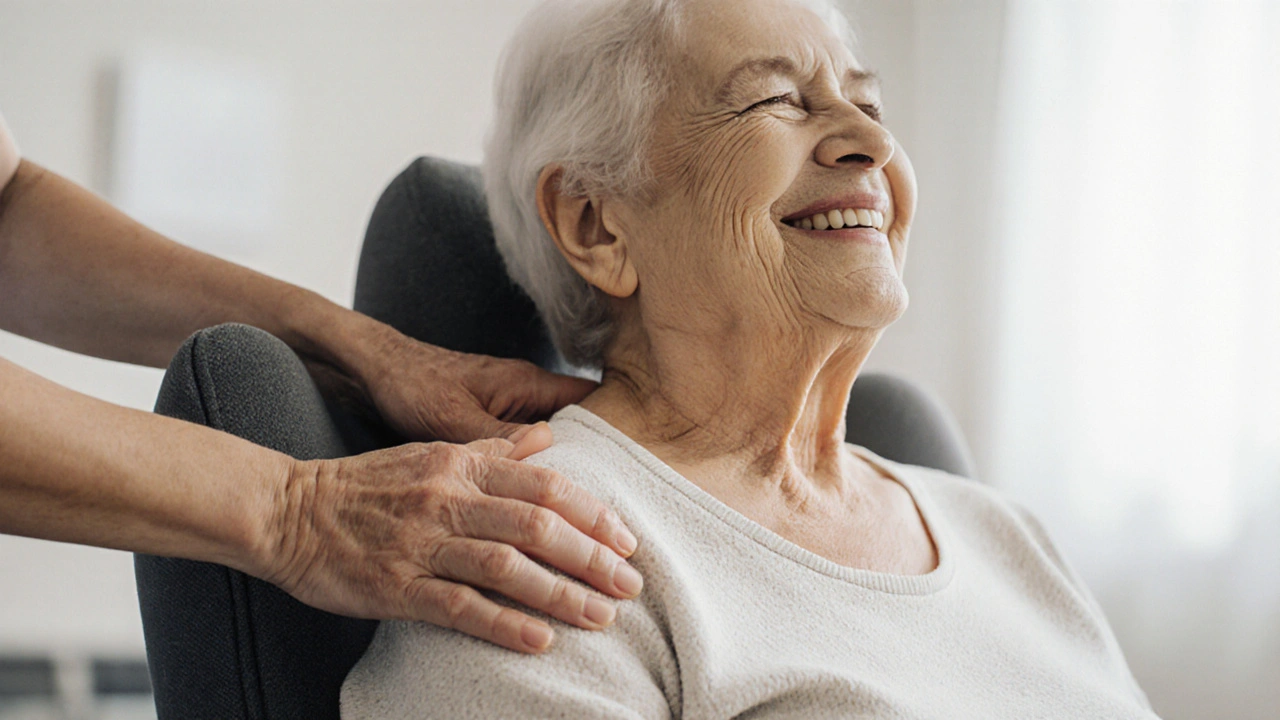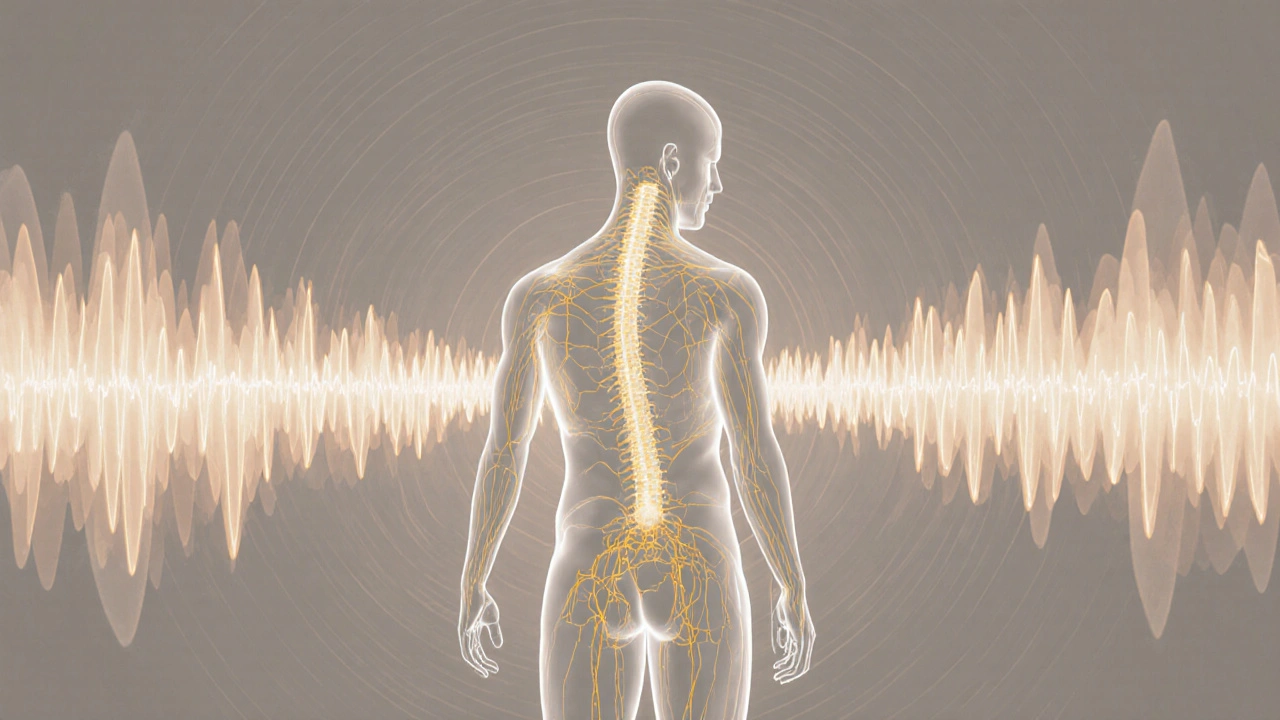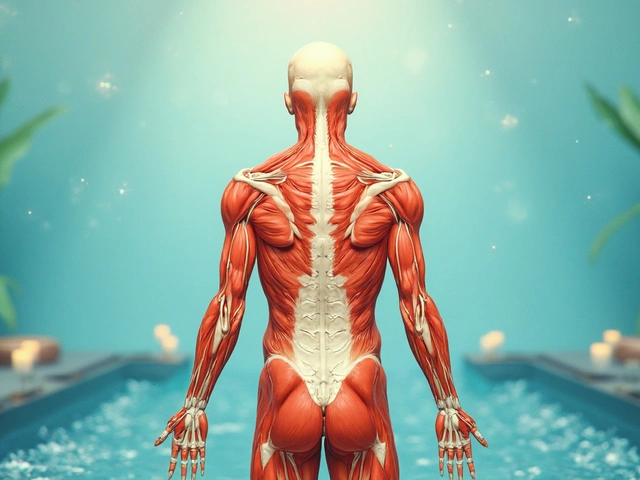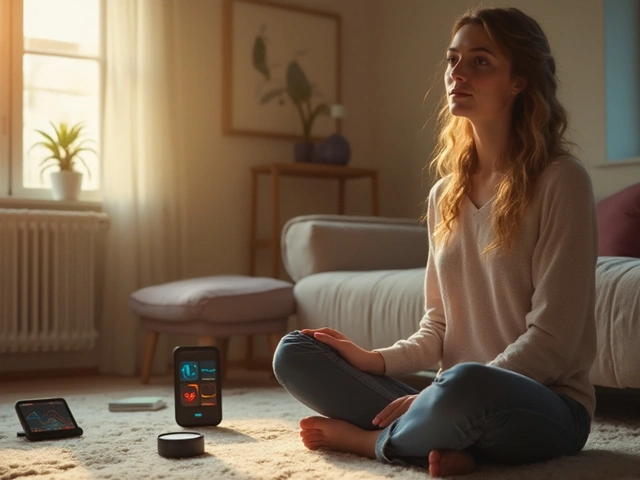What if your body already knows how to heal itself-and all it needs is a little nudge in the right direction? That’s the quiet promise behind Ortho-Bionomy. It doesn’t force, stretch, or crack. It doesn’t demand you push through pain. Instead, it listens. And then, it helps your body find its own way back to ease.
What Is Ortho-Bionomy?
Ortho-Bionomy is a gentle, non-invasive bodywork method developed in the 1970s by British osteopath Arthur Lincoln Pauls. It’s based on the idea that your body has an innate intelligence-it remembers what it feels like to be balanced, even when you’re stuck in pain or tension. The goal isn’t to fix you. It’s to remind you of what balance feels like.
Unlike massage or chiropractic adjustments that apply pressure or force, Ortho-Bionomy works by gently positioning your body into positions of comfort. You’re not passive here. You’re an active participant. The practitioner guides you to find postures where your muscles relax, your joints feel supported, and your nervous system starts to quiet down. In those moments of ease, your body begins to self-correct.
It’s not magic. It’s neurology. When you move into a position that feels good, your brain receives a signal: “This is safe. This is familiar.” That signal tells your muscles to release, your joints to realign, and your pain signals to dim. It’s like hitting the reset button on your body’s stress response.
How It Works: The Science Behind the Soft Touch
Ortho-Bionomy doesn’t rely on force because force triggers defense. When you push against a tight muscle, your body fights back. That’s the stretch reflex in action. Ortho-Bionomy avoids that entirely. Instead, it uses positional feedback-placing your limbs, spine, or pelvis in positions that naturally feel comfortable to you.
Here’s how it plays out in practice: If your shoulder hurts when you raise your arm, the practitioner won’t pull it higher. They’ll gently guide it just a few degrees lower, into the exact spot where the ache fades. You might not even notice it at first. But within seconds, your shoulder starts to soften. Your breathing deepens. And your body, without being told, begins to reorganize.
This works because of proprioception-the sense your body has of where it is in space. When you’re in chronic pain, your brain’s map of your body gets blurry. Ortho-Bionomy sharpens that map. It gives your nervous system accurate, non-threatening input. And your body responds by releasing tension it’s been holding onto for months-or years.
Studies on similar gentle somatic techniques show measurable reductions in cortisol levels and increased parasympathetic activity. While large-scale clinical trials on Ortho-Bionomy specifically are limited, the principles it uses-proprioceptive re-education, neuromuscular reprogramming-are well-documented in physical therapy and pain science.
What It’s Good For
Ortho-Bionomy isn’t a cure-all, but it’s incredibly effective for things that don’t respond well to force:
- Chronic pain-back, neck, knee, or shoulder pain that won’t go away with stretching or medication
- Stress-related tension-tight shoulders, clenched jaws, headaches from mental strain
- Recovery from injury-after surgery, sprains, or accidents, when aggressive therapy is too much
- Mobility issues-stiffness from aging, arthritis, or long-term inactivity
- Emotional holding patterns-people who carry grief, anxiety, or trauma in their bodies often find relief here
One woman in Canberra, 68, had been living with lower back pain for 12 years after a fall. She’d tried physio, acupuncture, and even epidurals. Nothing gave lasting relief. After three Ortho-Bionomy sessions, she stopped needing her cane. She didn’t feel “fixed.” She just started moving differently-without thinking about it.
What It’s Not
Ortho-Bionomy is not:
- A replacement for medical diagnosis or treatment
- A high-pressure massage
- A quick fix for acute injuries
- A spiritual or energy-based practice like Reiki
It’s a physical technique grounded in anatomy and neurology. You don’t need to believe in it for it to work. You just need to be willing to let your body feel safe.

What to Expect in a Session
Most sessions last 60 to 75 minutes. You stay fully clothed-loose, comfortable clothing works best. You lie on a table, sit in a chair, or sometimes stand. There’s no oil, no music, no chanting. Just quiet conversation and gentle movement.
The practitioner will ask you to describe where you feel discomfort. Then, they’ll move you slowly-so slowly you might wonder if anything’s happening. But then, you’ll feel it: a release. A sigh. A warmth spreading through your hip. A breath you didn’t know you were holding.
You might be asked to move your own arm slightly, or to gently shift your weight. These aren’t exercises. They’re invitations. Your body chooses the movement. The practitioner just supports it.
Afterward, you might feel lighter, calmer, or even a little tired. That’s normal. Your nervous system just reset. Some people feel better immediately. Others notice changes over the next few days-better sleep, less morning stiffness, fewer headaches.
Who Can Benefit
Ortho-Bionomy is one of the most accessible bodywork methods out there. It’s safe for:
- Seniors with osteoporosis or joint replacements
- Pregnant women
- Children with growing pains or sports injuries
- People with chronic fatigue or fibromyalgia
- Anyone who’s tired of being pushed, pulled, or cracked
It’s especially helpful for people who’ve been told, “It’s just aging,” or “You’ll have to live with it.” That’s not true. Your body is still capable of change-even at 80.
How to Find a Practitioner
Ortho-Bionomy isn’t as widely known as massage or chiropractic care, but trained practitioners exist in most major cities. Look for someone certified by the Ortho-Bionomy Society or the International Association of Ortho-Bionomy. Certification requires at least 200 hours of training, including anatomy, physiology, and supervised practice.
In Australia, practitioners are listed on the official Ortho-Bionomy Australia website. Ask if they’ve worked with people who have your specific issue. A good practitioner will ask you more questions than they give advice.

Can You Do It Yourself?
Yes-and that’s one of the best parts. Ortho-Bionomy isn’t just something done to you. It’s a skill you can learn. Simple self-care techniques include:
- When your neck is stiff, gently turn your head just a little to the side-until you feel a tiny bit of relief. Hold there for 20 seconds. Don’t push further. Just breathe.
- If your lower back aches, lie on your back and slowly slide one knee toward your chest-not all the way, just until the pain eases. Stay there. Let gravity do the work.
- For tight shoulders, sit in a chair and let one arm hang loosely. Gently rock your torso side to side. Let your arm swing like a pendulum. No force. Just movement.
These aren’t stretches. They’re invitations to comfort. The key is to stop before it hurts. The healing happens in the space between discomfort and ease.
Why It Matters Now
In a world that rewards pushing harder, Ortho-Bionomy is radical. It says: Rest is not weakness. Ease is not laziness. Healing doesn’t have to hurt.
Chronic pain affects one in five adults. Most treatments focus on masking symptoms-pills, injections, surgery. Ortho-Bionomy asks a different question: What does your body already know how to do?
It’s not about fixing what’s broken. It’s about remembering what was always there.
Final Thought
You don’t need to be athletic, flexible, or spiritually inclined to benefit from Ortho-Bionomy. You just need to be willing to feel. To pause. To let your body guide you-not your mind, not your expectations, not your past injuries.
If you’ve tried everything and still carry tension in your shoulders, your hips, your jaw-maybe it’s not that you’re broken. Maybe you just haven’t been heard.





